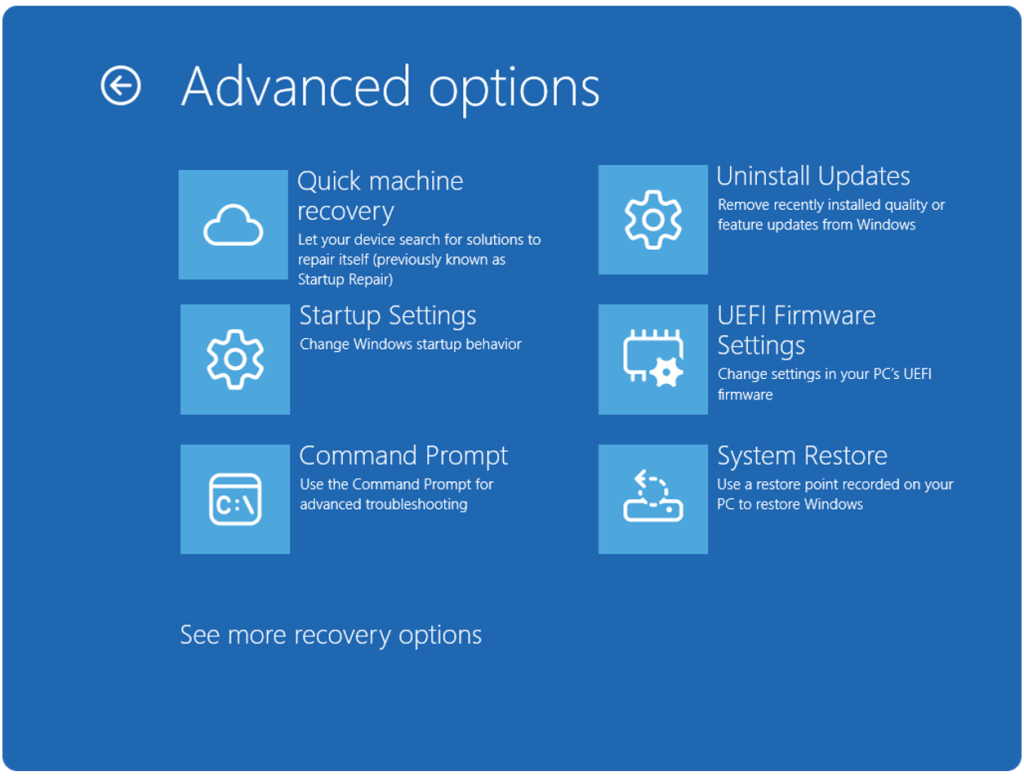Microsoft has unveiled an innovative feature called Quick Machine Recovery (QMR), now available in the Windows Insider Preview Beta Channel for Windows 11, version 24H2.
This technology, part of the Windows Resiliency Initiative, aims to automate the detection, diagnosis, and resolution of critical boot failures, significantly reducing downtime and manual intervention for users and IT administrators alike.
A Game-Changer for System Recovery
As announced by CEO Satya Nadella during Microsoft Ignite 2024, Quick Machine Recovery is designed to address widespread boot issues that leave devices stuck in the Windows Recovery Environment (Windows RE).
Traditionally, such failures required extensive troubleshooting by IT teams, leading to productivity losses.
With QMR, Microsoft can deploy targeted remediations remotely via Windows RE, enabling devices to recover automatically and return to a functional state without complex manual fixes.
Key Features and Technical Capabilities
Quick Machine Recovery builds on the foundation of Startup Repair but introduces cloud-based automation and enhanced system resilience.

Here are its core capabilities:
- Cloud Remediation: Devices connect to Windows Update through a secure network (Ethernet or WPA-protected Wi-Fi) to search for fixes. If enabled, this process automates recovery by analyzing crash data and downloading targeted patches.
- Auto Remediation: Once a recovery attempt begins, the system retries automatically if no solution is found initially—eliminating the need for user intervention during subsequent attempts.
- Preconfiguration Options: IT administrators can pre-populate network credentials and configure scanning intervals (recommended every 30 minutes) and timeout periods (recommended 72 hours) to optimize recovery processes.
- Testing Mode: A test remediation package allows admins to simulate the recovery process before deploying it across devices.
How Quick Machine Recovery Works
The recovery process is streamlined into several automated phases:
- Detection and Activation: When a device encounters repeated boot failures, it enters Windows RE and activates QMR.
- Network Connection: The system establishes a secure network connection to communicate with Microsoft’s recovery services.
- Crash Data Analysis: Diagnostic data is sent to Microsoft servers, where algorithms identify patterns and root causes of failure.
- Remediation Deployment: Targeted fixes are delivered via Windows Update, addressing issues like buggy drivers or compatibility conflicts.
- Reboot Cycle: After applying a remediation, the device reboots. If successful, it returns to normal operation; otherwise, the process repeats until resolved.
Benefits for IT Administrators and Users
Quick Machine Recovery reduces the burden on IT teams by automating recovery tasks that previously required manual intervention.
For organizations running Windows 11 Pro or Enterprise editions, admins can customize QMR settings using tools like RemoteRemediation CSP or reagentc.exe commands in an administrative prompt.
Home users benefit from the default enablement of QMR, ensuring seamless recovery during critical failures.
Real-World Applications
The rollout of QMR comes in response to incidents like the CrowdStrike update failure in July 2024, which caused widespread boot crashes globally.
In such scenarios, QMR could have automated fixes remotely—saving time and effort for millions of users.
Beyond emergencies, this tool provides resilience against common issues like problematic drivers or software bugs.
Getting Started
Windows Insiders can begin testing Quick Machine Recovery by installing the latest Beta Channel build for Windows 11, version 24H2.
Feedback can be submitted via the Feedback Hub under Recovery and Uninstall > Quick Machine Recovery.
Microsoft plans to refine this feature further based on user input before its broader release across all editions of Windows 11.
Looking Ahead
As part of Microsoft’s vision for zero-downtime computing, Quick Machine Recovery represents a significant leap forward in system resilience.
Future updates are expected to expand networking configurations and enhance automation capabilities, ensuring even greater reliability for both enterprise environments and individual users.
For more details on this feature and its role in the Windows Resiliency Initiative, visit the official Microsoft documentation or follow updates on the Windows Insider Blog.
Also Read: